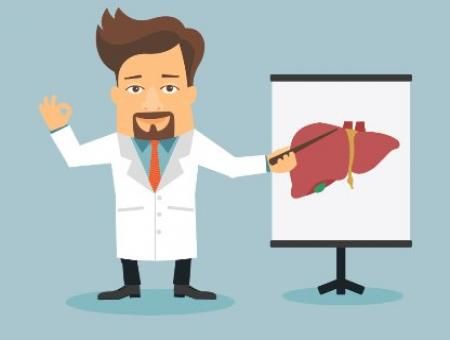
Binge Drinking and Alcoholic Liver Disease (ALD): Understanding the Link
By Dr. Vibhu Mittal in Gastroenterology, Hepatology & Endoscopy
Apr 17 , 2024 | 2 min read
Your Clap has been added.
Thanks for your consideration
Share
Share Link has been copied to the clipboard.
Here is the link https://www.maxhealthcare.in/blogs/binge-drinking-and-alcoholic-liver-disease
Alcoholic Liver Disease (ALD) stands as a poignant consequence of excessive alcohol consumption, particularly prevalent among young adults who engage in binge drinking.
Understanding Binge Drinking
Binge drinking is defined as a pattern of alcohol consumption leading to blood alcohol concentration (BAC) levels of 0.08 grams per deciliter or higher and is a common behavior among young adults. It often involves consuming large quantities of alcohol in a short period, typically within two hours. While occasional alcohol consumption may not pose immediate harm, binge drinking represents a significant risk factor for ALD.
Mechanisms of ALD Development
ALD encompasses a spectrum of liver conditions, ranging from fatty liver (steatosis) to more severe forms like alcoholic hepatitis and cirrhosis. The liver's ability to metabolize alcohol is crucial in understanding ALD's progression.
- Fatty Liver (Steatosis)
- Binge drinking can lead to the accumulation of fat in liver cells, a condition known as fatty liver.
- The liver metabolizes alcohol into acetaldehyde, a toxic substance that damages liver cells and impairs fat metabolism.
- Excessive alcohol consumption disrupts the balance of fat breakdown and removal, resulting in the accumulation of fat droplets within liver cells.
- Alcoholic Hepatitis
- Prolonged binge drinking can progress to alcoholic hepatitis, characterized by liver inflammation.
- The inflammatory response is triggered by the liver's attempt to metabolize acetaldehyde and repair damaged cells.
- Inflammatory cytokines and oxidative stress further contribute to liver cell injury and inflammation.
- Cirrhosis
- The most advanced stage of ALD, cirrhosis, is a result of long-term, heavy alcohol consumption.
- Continued binge drinking leads to the formation of scar tissue, replacing healthy liver tissue.
- Liver function becomes severely impaired, affecting blood flow and essential metabolic processes.
Accelerated Liver Damage
Binge drinking accelerates ALD progression through various mechanisms:
1. Oxidative Stress
- Alcohol metabolism generates free radicals and reactive oxygen species, leading to oxidative stress.
- Oxidative stress damages liver cells, DNA, and proteins, contributing to inflammation and fibrosis.
2. Inflammation
- Binge drinking triggers an inflammatory response, with immune cells infiltrating the liver.
- Chronic inflammation damages liver tissue and promotes fibrosis, the precursor to cirrhosis.
3. Nutritional Deficiencies
- Excessive alcohol consumption interferes with nutrient absorption, particularly vitamins essential for liver health (e.g., B vitamins).
- Binge drinkers often have poor diets, compounding nutritional deficiencies that impact liver function.
4. Gut Microbiota Dysbiosis
- Binge drinking alters the composition of gut microbiota, leading to dysbiosis.
- Dysbiosis contributes to liver inflammation and the production of harmful substances that further damage liver cells.
Long-Term Consequences
- The consequences of binge drinking on Alcoholic Liver Disease are profound and long-lasting:
1. Increased Risk of Cirrhosis
- Binge drinking significantly elevates the risk of developing liver cirrhosis compared to moderate alcohol consumption.
- Cirrhosis, irreversible in its advanced stages, can lead to liver failure and the need for transplantation.
2. Liver Cancer
- Chronic inflammation and cirrhosis resulting from binge drinking increase the risk of liver cancer (hepatocellular carcinoma).
- Liver cancer has a poor prognosis and limited treatment options in advanced stages.
3. Portal Hypertension and Varices
- Cirrhosis from ALD can lead to portal hypertension, causing blood flow blockages in the liver.
- Portal hypertension results in varices (enlarged veins), which can rupture and cause life-threatening bleeding.
4. Hepatic Encephalopathy
- In advanced ALD, liver dysfunction leads to the accumulation of toxins in the bloodstream.
- Hepatic encephalopathy occurs when these toxins reach the brain, causing cognitive impairment, confusion, and coma.
Conclusion
Prevention and education are vital in addressing ALD in young adults. Promoting responsible drinking habits, early intervention through screening and counseling, and raising awareness about the risks associated with binge drinking can mitigate the burden of ALD on individuals and healthcare systems alike. It is imperative that both individuals and society at large recognize the dangers of binge drinking and take proactive steps to safeguard liver health.

Written and Verified by:
Related Blogs

Dr. Nivedita Pandey In Gastroenterology, Hepatology & Endoscopy , Liver Transplant and Biliary Sciences
Nov 08 , 2020 | 2 min read

Dr. Nivedita Pandey In Gastroenterology, Hepatology & Endoscopy , Liver Transplant and Biliary Sciences
Nov 08 , 2020 | 2 min read

Dr. Nivedita Pandey In Gastroenterology, Hepatology & Endoscopy , Liver Transplant and Biliary Sciences
Nov 08 , 2020 | 2 min read
Blogs by Doctor

Dr. Vibhu Mittal In Gastroenterology, Hepatology & Endoscopy
Dec 16 , 2016 | 2 min read
Most read Blogs
Get a Call Back
Related Blogs

Dr. Nivedita Pandey In Gastroenterology, Hepatology & Endoscopy , Liver Transplant and Biliary Sciences
Nov 08 , 2020 | 2 min read

Dr. Nivedita Pandey In Gastroenterology, Hepatology & Endoscopy , Liver Transplant and Biliary Sciences
Nov 08 , 2020 | 2 min read

Dr. Nivedita Pandey In Gastroenterology, Hepatology & Endoscopy , Liver Transplant and Biliary Sciences
Nov 08 , 2020 | 2 min read
Blogs by Doctor

Dr. Vibhu Mittal In Gastroenterology, Hepatology & Endoscopy
Dec 16 , 2016 | 2 min read
Most read Blogs
- CAR T-Cell Therapy
- Chemotherapy
- LVAD
- Robotic Heart Surgery
- Kidney Transplant
- The Da Vinci Xi Robotic System
- Lung Transplant
- Bone Marrow Transplant (BMT)
- HIPEC
- Valvular Heart Surgery
- Coronary Artery Bypass Grafting (CABG)
- Knee Replacement Surgery
- ECMO
- Bariatric Surgery
- Biopsies / FNAC And Catheter Drainages
- Cochlear Implant
- More...



